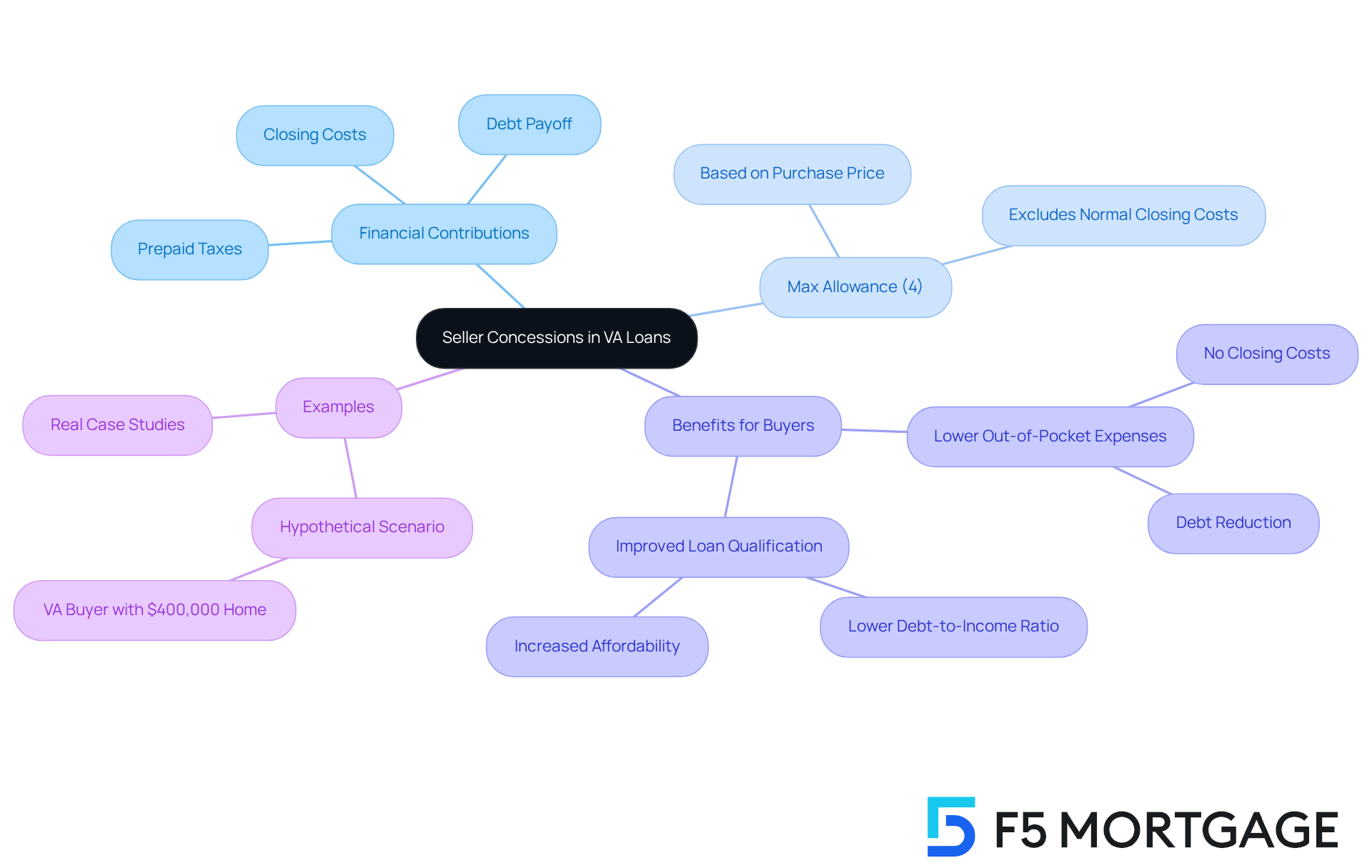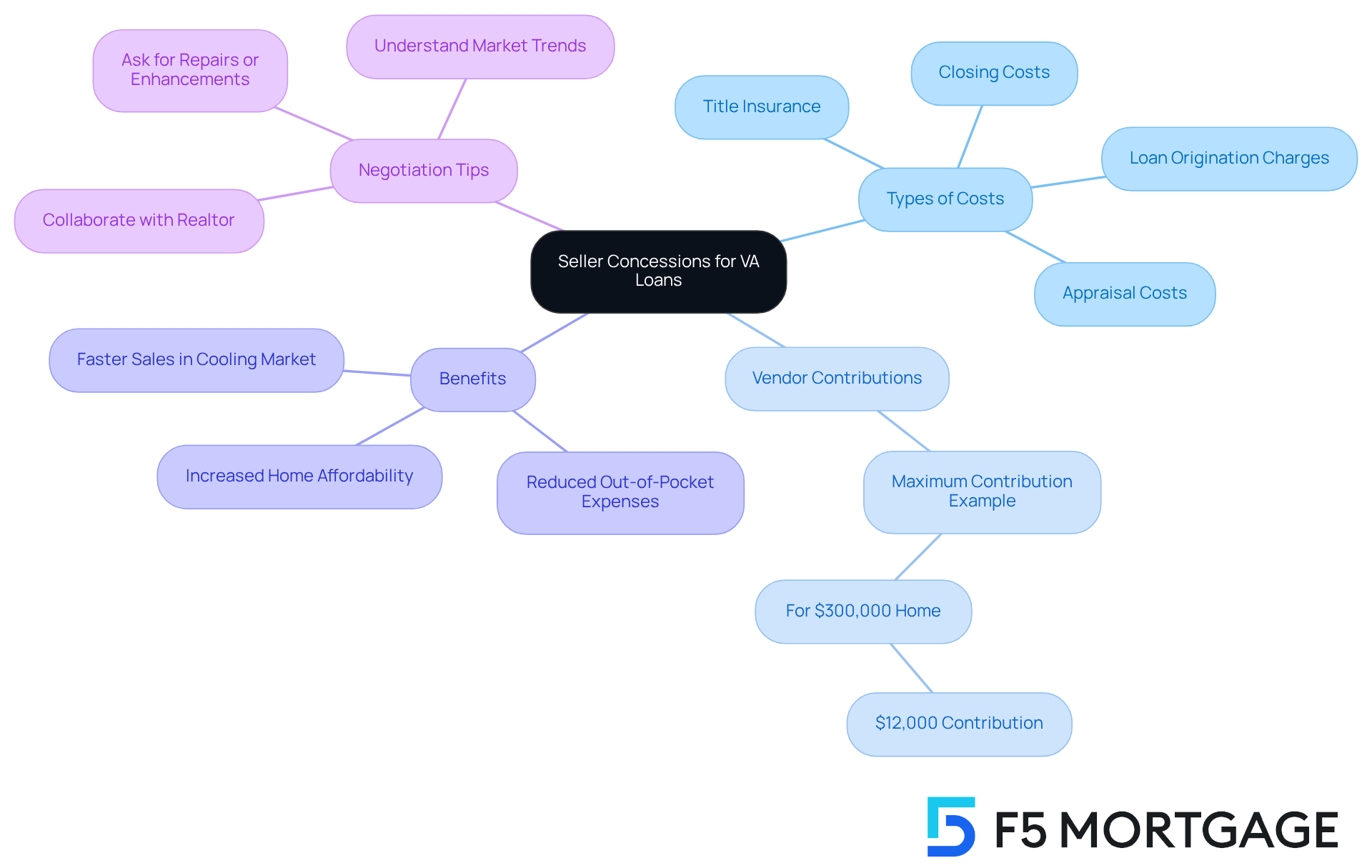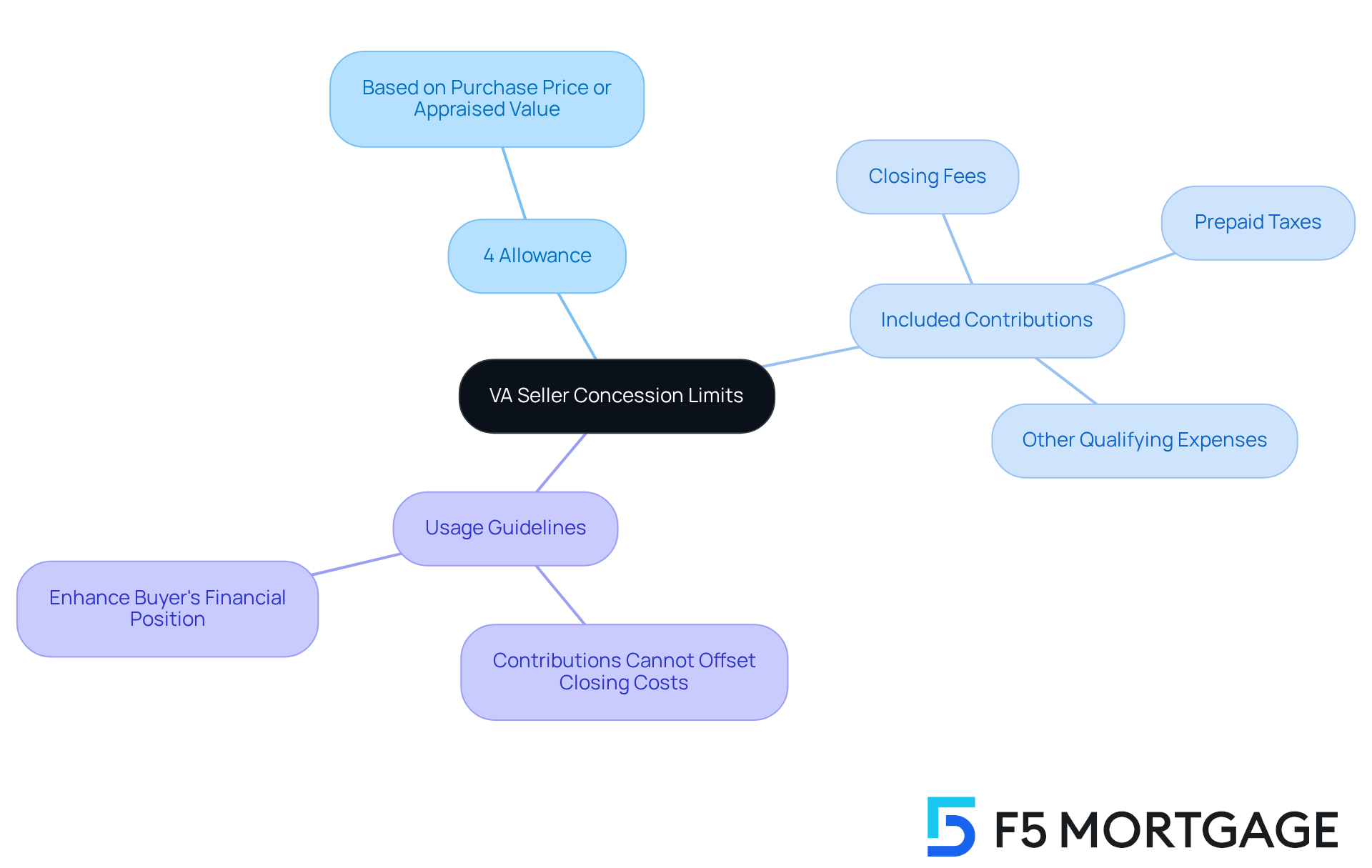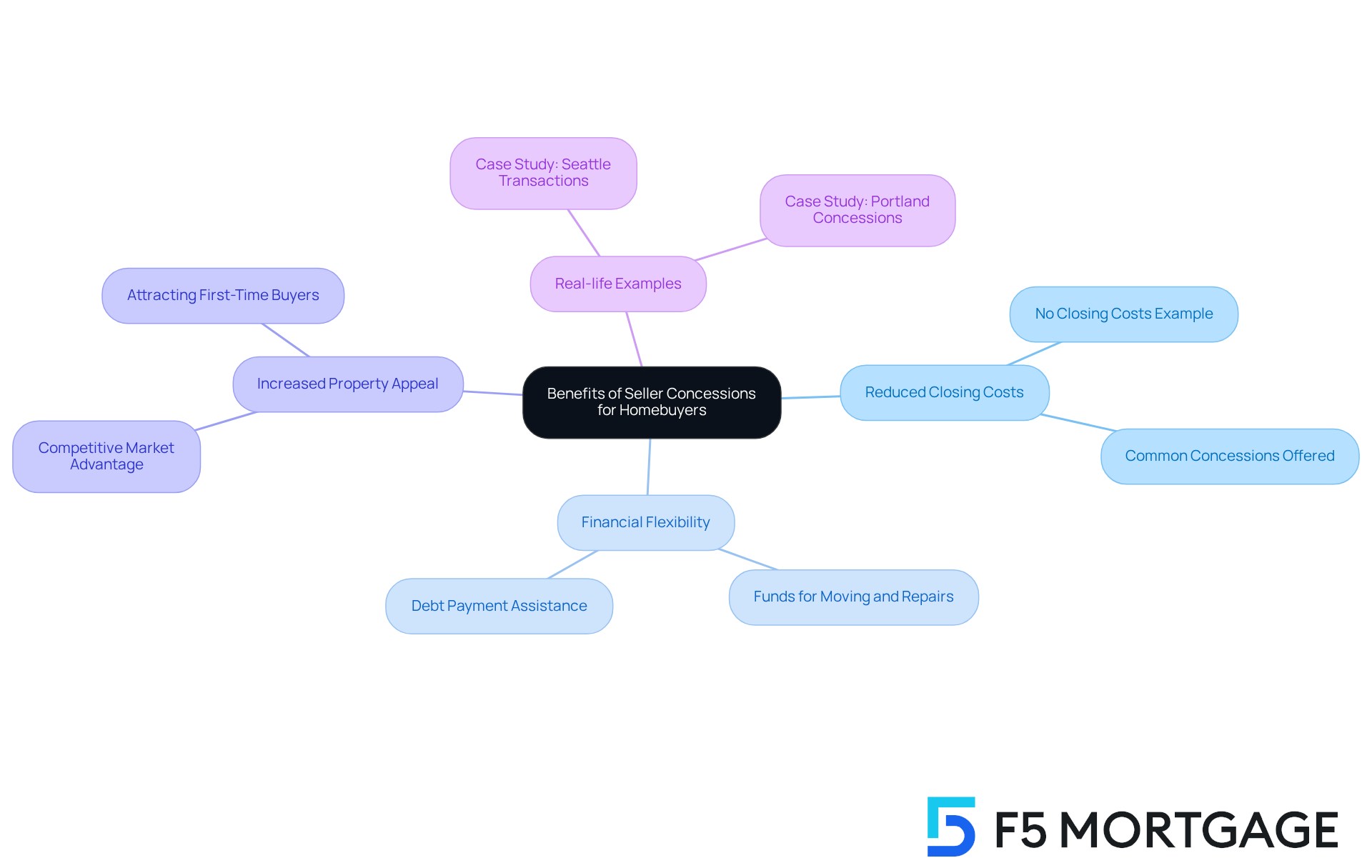Overview
This article is dedicated to helping families maximize VA seller concessions when purchasing a home. We understand how challenging this process can be, especially with the financial burdens associated with closing costs. By highlighting that sellers can contribute up to 4% of the home’s purchase price towards various expenses, we aim to show how these concessions can make homeownership more accessible.
Imagine being able to negotiate better terms for your new home! Practical examples of successful negotiations illustrate how families have benefited from these concessions, empowering them in their journey towards homeownership. We’re here to support you every step of the way, guiding you through this process with compassion and understanding.
Introduction
Navigating the home buying process can feel like a daunting journey, especially for veterans seeking to utilize VA loans. We know how challenging this can be. However, understanding the concept of seller concessions can significantly ease this path, transforming potential hurdles into manageable steps.
By leveraging VA max seller concessions, families can access essential financial support that covers closing costs and other expenses. This support makes homeownership not just a dream, but a tangible reality.
Yet, how can buyers effectively negotiate these concessions to maximize their benefits? We’re here to support you every step of the way, ensuring a smoother transition into your new home.
Define Seller Concessions in the Context of VA Loans
When it comes to purchasing a home, financial contributions from vendors can make a significant difference for buyers. For those utilizing VA loans, VA max seller concessions can cover essential expenses such as closing fees, prepaid taxes, and other costs. This support can greatly reduce the out-of-pocket expenses for buyers, making the dream of homeownership more attainable.
The Department of Veterans Affairs (VA) allows vendors to contribute VA max seller concessions of up to 4% of the home’s purchase price in allowances. Imagine a veteran homebuyer looking at a $400,000 home. The vendor could cover all customary closing costs and even pay off an $8,000 auto loan. This means the buyer could potentially face no closing costs or down payment, easing their financial burden significantly.
Such arrangements not only enhance affordability but also improve a buyer’s ability to qualify for a loan by lowering their debt-to-income ratio. Real estate experts emphasize the importance of negotiating for vendor allowances and VA max seller concessions, as these can be transformative factors for veterans. We understand how challenging the home buying process can be, and we’re here to support you every step of the way. By exploring these options, you can find crucial financial support that helps you navigate the home purchasing journey with confidence.

Explain How Seller Concessions Work for VA Loans
Va max seller concessions can provide a real relief for homebuyers, helping to ease the financial burden they often face at closing. For those utilizing VA loans, vendors can cover all permissible closing expenses, which include va max seller concessions, loan origination charges, appraisal costs, and title insurance. Additionally, vendors can contribute up to 4% of the home’s purchase price towards extra costs, such as settling debts or covering the VA max seller concessions.
For instance, with a Notice of Value (NOV) of $300,000, the vendor could contribute as much as $12,000. This arrangement not only makes homeownership more affordable but also enhances the property’s appeal in the market by utilizing va max seller concessions to lower initial costs. In a cooling market, va max seller concessions can lead to quicker sales, making homes more attractive to potential buyers.
We understand that negotiating can feel daunting, but successful tactics—like asking for repairs or enhancements as part of the proposal—can significantly increase these concessions. This empowers veterans to secure homes with less out-of-pocket expense. Take Dennis, for example; he successfully negotiated for the vendor to cover his entire $10,000 in closing costs, demonstrating how va max seller concessions can alleviate upfront burdens.
With F5 Mortgage’s flexible mortgage solutions and personalized support, families can approach these negotiations with confidence. We’re here to support you every step of the way, ensuring a smoother path to homeownership.

Outline VA Seller Concession Limits and Guidelines
Navigating the world of vendor allowances can feel overwhelming, but understanding the VA’s guidelines is essential for families looking to maximize their benefits. The VA sets specific boundaries on vendor allowances to protect both purchasers and vendors. The highest allowance granted is 4% of the home’s purchase price or appraised value, whichever is less. This cap includes contributions toward closing fees, prepaid taxes, and other qualifying expenses.
It’s important to note that allowances from the vendor cannot be used directly to offset the purchaser’s closing expenses. Instead, they should be structured as contributions that enhance the buyer’s overall financial position. For instance, if a family negotiates effectively, they could have the vendor cover the VA funding fee or pay off existing debts, which would count toward the 4% limit.
Comprehending these parameters is crucial for families seeking to enhance their advantages from VA max seller concessions while ensuring adherence to VA guidelines. We know how challenging this can be, and we’re here to support you every step of the way.

Highlight the Benefits of Seller Concessions for Homebuyers
VA max seller concessions provide significant advantages for homebuyers, especially those utilizing VA loans. By reducing the cash required at closing, these adjustments make homeownership more attainable for families.
For example, when a seller covers closing costs, it allows buyers to allocate their funds toward essential expenses like moving or home improvements, easing financial pressure.
In competitive markets, homes with seller incentives often stand out, giving buyers a compelling reason to choose one property over another. This thoughtful approach not only enhances a property’s appeal but also fosters a smoother and more budget-friendly home purchasing experience.
We know how challenging this process can be, and real-life examples show families benefiting from VA max seller concessions, which transform the homebuying experience into a more manageable and less overwhelming journey.

Conclusion
Maximizing VA seller concessions is not just a strategic approach; it’s a compassionate way to ease the financial burden of purchasing a home for veterans and their families. By understanding and leveraging the allowances available through VA loans, homebuyers can significantly reduce their out-of-pocket expenses, making their dream of homeownership more achievable than ever.
In this article, we shared key insights about seller concessions, including:
- What they are
- How they function within VA loans
- The specific limits established by the Department of Veterans Affairs
We highlighted the importance of negotiating these concessions, illustrating how they can cover essential costs like closing fees and even assist in settling existing debts. Through real-life examples, we demonstrated the tangible benefits of seller concessions, showcasing how they can transform the homebuying experience into a more manageable journey.
The significance of VA seller concessions goes beyond mere financial relief; they offer veterans a pathway to secure homes without the usual financial strain. As families navigate the home buying process, understanding these concessions empowers them to negotiate better terms, ultimately leading to a smoother transition into their new home. We know how challenging this can be, but embracing this knowledge and actively seeking out VA seller concessions can truly pave the way for a brighter future in homeownership.
Frequently Asked Questions
What are seller concessions in the context of VA loans?
Seller concessions refer to financial contributions from vendors that can help cover essential expenses for buyers utilizing VA loans, such as closing fees, prepaid taxes, and other costs.
How much can vendors contribute as seller concessions for VA loans?
The Department of Veterans Affairs (VA) allows vendors to contribute up to 4% of the home’s purchase price in seller concessions.
Can you provide an example of how seller concessions work?
For instance, if a veteran homebuyer is looking at a $400,000 home, the vendor could cover all customary closing costs and even pay off an $8,000 auto loan, potentially resulting in no closing costs or down payment for the buyer.
How do seller concessions benefit homebuyers?
Seller concessions enhance affordability for buyers and can improve their ability to qualify for a loan by lowering their debt-to-income ratio.
Why is it important to negotiate for seller concessions?
Negotiating for seller concessions can be transformative for veterans, significantly easing their financial burden during the home buying process.








